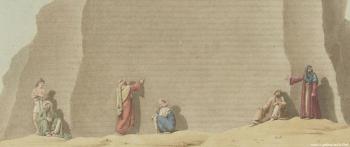Procurement, Trade, Use And Value of Minerals in Ancient Africa
Royal Academy for Overseas Sciences
9-11 February 2022
Palace of the Academies, Brussels

Africa has a wealth of mineral resources which were used in various cultural settings and played a major role in the emergence and development of major cultural groups from at least the 6th millennium onward. Minerals from Ethiopia (obsidian, amazonite) are closely associated to the emergence of social complexity in the Neolithic of the Sudanese Nile Valley and further north, in Predynastic Egypt. Minerals and semiprecious stones represented prestigious elements possibly traded over large distances in the Neolithic of the Sahara. In Dynastic Egypt, raw materials have been massively used for large architectural structures while luxury goods made use of rare minerals and precious metals, either mined locally or imported from remote sources. In several parts of Central and Southern Africa, copper has played during the last two millennia a major economic and social role, comparable to that of gold in other regions in the world. Even if the upstream part of the supply chain is specific to each context, it is the purpose to check how the downstream aspects (use, value) compare in the various case studies (a.o. the Saharan Neolithic, pharaonic Egypt, pre-colonial Africa). The conference aims at exploring the procurement, trade, use and value of minerals in Africa. The proposed approach is intrinsically multidisciplinary as the study of procurement, sourcing and use of minerals gathers specialists from different research fields – geology, archaeology, anthropology, history, art history, philology, etc. The concept of value is more complex and refers to fluctuating and ambivalent meanings. On the one hand, value is probably specific to a given context, as emphasized by the variety of “top” luxury commodities throughout the world (copper in Central Africa, gold in Egypt, jade in China, etc.). On the other hand, value is also a function of the intensity of the workforce invested in the procurement (mining, long-distance trade) and use (carving, smelting) of a given mineral – which might offer a common touchstone applying to various cultural contexts. Further, value is also conferred through “resource greed” emanating from social or religious elite groups, linking precious minerals procurement and trade to increasing social complexity, in various contexts. This transversal theme will be fuelled by thematic approaches in the various study areas.
The Royal Academy for Overseas Sciences Conference welcomes to-the-point, novel talks on the procurement, trade, use and value of minerals in and around pre-colonial Africa. Different viewpoints from various disciplines are most welcome. We therefore invite original (oral or poster) contributions on themes such as sourcing (geochemical/isotopic) analyses, archaeological contexts and finds, mapping ancient procurement sites, trade routes, uses of specific materials in art history, written sources, religious/ideological beliefs connected to minerals, etc.
Call for contributions
Deadline: 31 August 2021
http://www.kaowarsom.be/mininafrica / mininafrica@kaowarsom.be